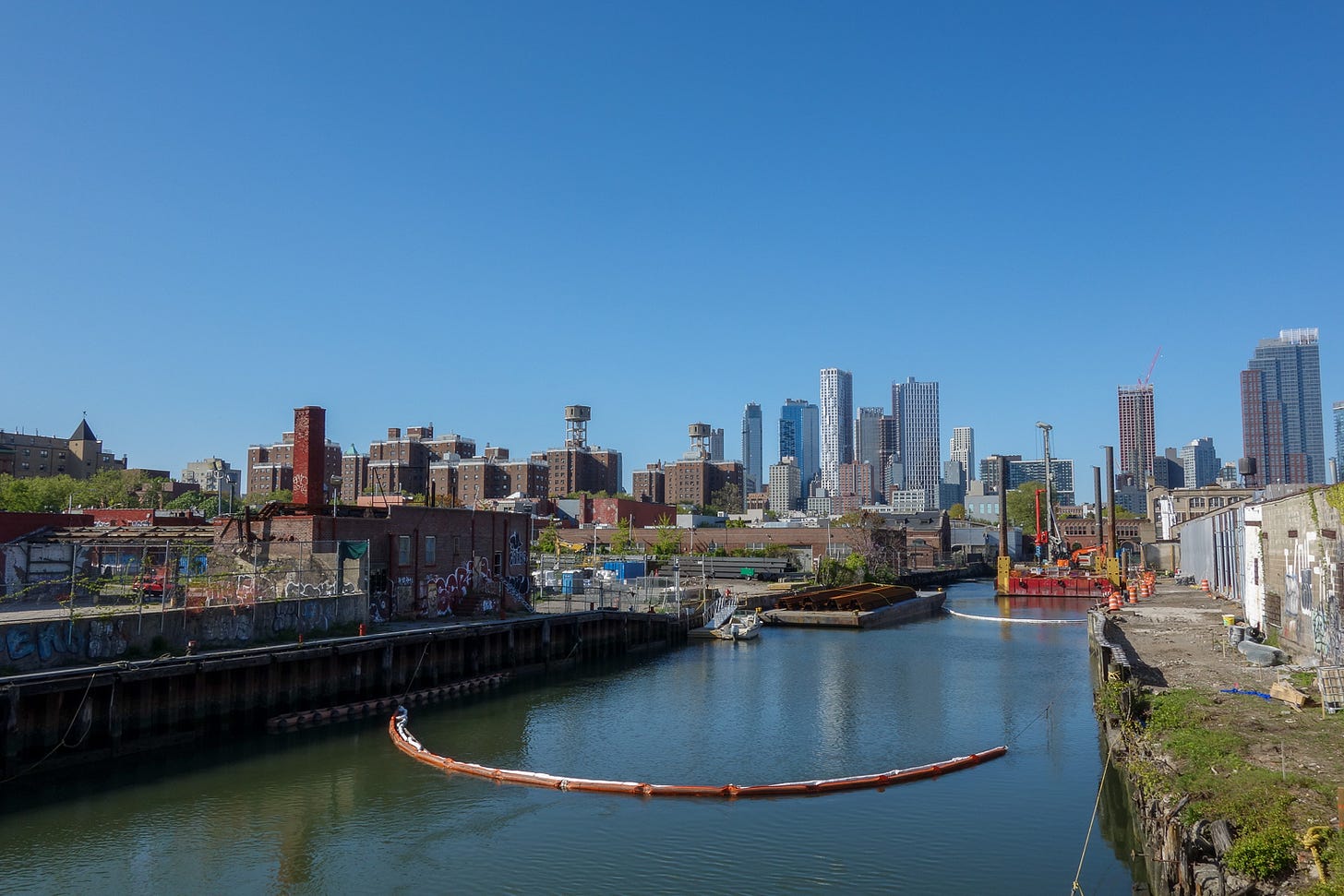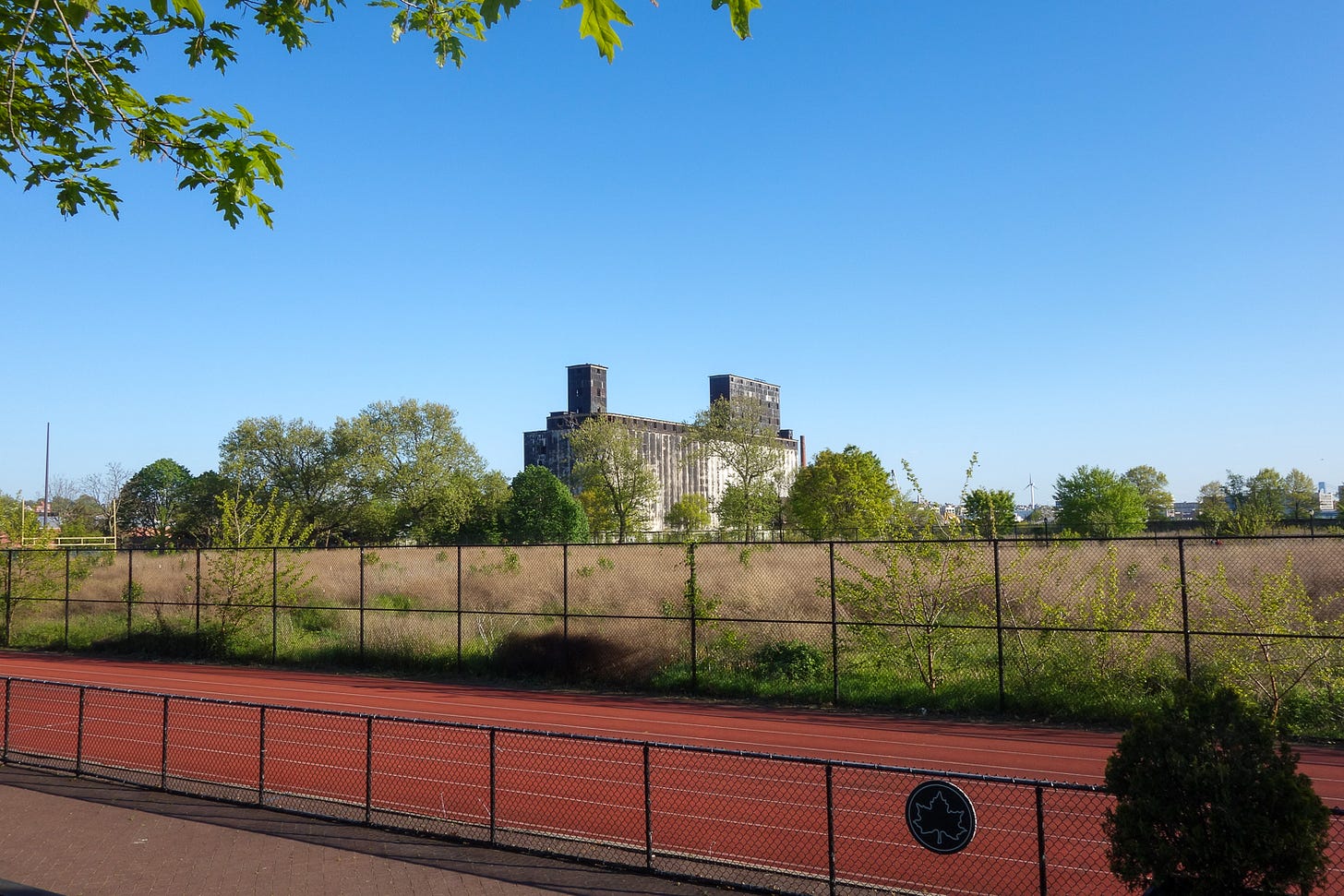
Hello and welcome to Pedestrian, a monthly newsletter by Alex T. Wolfe about walking and our everyday surroundings.
New Story: Last summer my girlfriend and I found an apartment together, only to discover we had inherited an exceptionally bad cockroach problem from the previous tenant. The story aired on WHYY’s The Pulse last month and is now available online.
I’d also like to thank everyone who signed up for the Patreon. This is a new experiment, but if you’ve appreciated Pedestrian in the past, please consider supporting for just $5 a month. In return, you’ll be the first to receive a copy of Pedestrian Magazine 5 (coming late June), digital copies of Pedestrian Magazine 1–4, and more TBA. As always, I’m incredibly grateful for your support.
Thanks for reading,
Alex
Walking to the Statue of Liberty

If you live in New York City, it’s not uncommon to go a couple of months without seeing the Statue of Liberty. After being here for almost five years, it’s become another fixture of this city that I’ve completely taken for granted, only to be reminded of its allure while riding the Staten Island Ferry or spending time with out-of-towners.
Last week I was in need of a good walk and visiting Lady Liberty seemed like a wonderful idea after nine weeks of quarantine. I couldn’t actually walk to the statue given that it sits on a small island surrounded by a body of water technically owned by New Jersey. The closest I could get was walking five and a half miles to the waterfront in Red Hook, Brooklyn.
I started my 11 mile journey on Myrtle Avenue, where I continued to walk for a few blocks. I cut down Throop Avenue and turned once again at Lafayette Avenue, creating an invisible zig-zag pattern that repeated throughout my travel. I spent the first hour distracted, making frequent stops to adjust the settings on my camera as I took photos, or checking my phone to make sure it was still tracking my route. Periodically, I’d fumble with my field recorder while trying to capture a piece of audio, such as the distant sound of a guitar echoing off the facades of the brownstones surrounding me. Trying to document everything was exhausting and ultimately disconnected me from the present moment.

After nearly three miles of stop-and-go, I finally surrendered to the walk ahead of me. I put my camera down and let the sidewalk guide me as I avoided familiar streets. I felt my spirits shift from discontent to exhilaration as I crossed over the Gowanus Canal at the Union Street Bridge. I noticed the weeds growing out of the unkempt sidewalk. Between two buildings, an empty lot full of nothing but dirt allowed an expansive blue sky to show itself. The sun cast shadows that took up the entire street and reminded me I was no longer walking the tree-lined residences of Bed Stuy.
I felt a range of emotions that I’d previously been too preoccupied to recognize. I was wound up, exhausted, anxious, inspired, restored, determined, calm. The continuous motion of the walk kept my emotions strung together as they moved up and down, block by block.

I crossed beneath the Brooklyn-Queens Expressway and walked to the Red Hook Ballfields. Ironically, this is probably one of my favorite green spaces in the city for its unusual character. The fields, deemed unsafe by the EPA, were once occupied by lead smelting facilities. Soccer Field 3 is completely overgrown and surrounded by a fence, giving little resemblance of a playing field if it weren’t for the field goal posts shooting out of the tall brush. You can still sit on the remaining bleachers or run on the track that surrounds it like a moat. The old Red Hook Grain Terminal stands tall in the background and for a moment It felt like I’m back in small town Iowa.
I didn’t expect any kind of climax as I reached the waterfront and saw the Statue of Liberty staring back at me from a distance. I’d seen the statue from this same spot many, many times before and have to admit it’s still comically underwhelming even after staying inside for an extended period. The water was beautiful, making the walk all the more worthwhile. Nearby, a small group enjoyed themselves as they sat masked in lawn chairs, drinking Corona’s and smoking cigars. I took a photo of the statue and turned back home.

The rest of the walk was unlike anything I’d experienced during the first half. My feet ached and the sun was beginning to set. My enthusiasm began to subside and I just wanted to get back home. Walking up Conover Street, I slipped into a rhythmic trance. My legs moved like clockwork as I crossed the street to avoid anyone standing in my way. I wasn’t stopping until I made it home.
There’s a feeling you get on the longer walks that is comparable to runner’s high (walker’s high?). The neighborhoods begin to blend together as one. Your pace increases and all sense of time is lost. I was invincible, convinced I would have walked all the way to Montauk that evening if I could. I watched the landscape quickly change from industrial buildings to brownstones once again. The unfamiliar streets I had chosen gradually became lined with familiar landmarks as I inched closer and closer to my destination. I saw the grocery store, the community garden, my bodega, and the birds flying in formation from a neighbor’s pigeon coop. I made a sharp turn on Myrtle Avenue as I filled with a sense of relief. I had walked to the The Statue of Liberty and after 11+ miles I was finally home.

Links
Between 1939 and 1941, the Works Progress Administration, in conjunction with the New York City Department of Taxation, organized teams of photographers to shoot pictures of every building in the five boroughs of New York City. These photographs are available online via the NYC Municipal Archives and predate Google Street View by almost 70 years. I was able to find photos of the elevated BMT Myrtle Line that once ran directly outside of my apartment. A lot has changed in the neighborhood over the last 80 years.
Speaking of the BMT subway, I briefly wrote about it for the latest issue of TRAVEL DOC. The elevated tracks once ran from Middle Village in Queens, all the way to Downtown Brooklyn, and even ran across the Brooklyn Bridge until 1949. Full newsletter here.
Writer Alan Booth once walked the entire length of Japan in 1977 and published a book about his journey titled The Roads to Sata. Here’s a great video of him on one of his many walks around Japan.
Matthew Coolidge on founding the Center for Land Use Interpretation (CLUI) in Los Angeles and why the organization chooses to limit its purview to the territorial boundaries of the USA.
Kathleen Flynn recently produced a video on New Orleans documenting the unusually empty streets during the times of coronavirus.
Thank you Dom + Lou, Emma, Iris, Liz, Nick, Rachel, Sarah, and Shelby for making this newsletter possible.
Pedestrian tells stories about the people, routines, and connections we make as a result of moving throughout one’s everyday surroundings. It began as a quarterly magazine in 2018 by Alex T. Wolfe and is occasionally released as a podcast.
Be in touch: pedestrianmagazine@gmail.com




I love the concept and believe, now more than ever, people will appreciate engaging with more than technology. Keep up the great work!